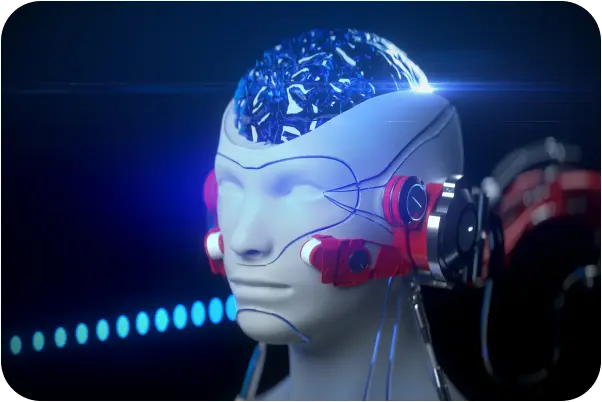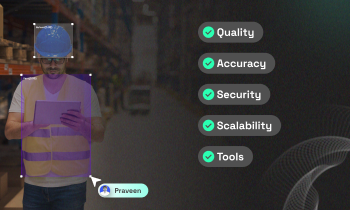Is crowd-sourced in-car audio being considered for future dataset expansion?
In-Car Audio
Dataset Expansion
Automotive Tech
In the rapidly evolving world of automotive technology, creating smarter, more intuitive AI systems hinges on the quality and diversity of training datasets. One promising frontier is the crowd-sourcing of in-car audio datasets, which addresses the unique challenges of speech recognition within a vehicle's complex acoustic environment. This approach enriches data diversity, vital for training sophisticated AI models that improve user interaction and vehicle functionality.
Understanding the Value of In-Car Speech Datasets
What Are In-Car Speech Datasets?
In-car speech datasets feature collections of voice recordings made inside vehicles. These recordings capture both spontaneous and prompted speech from drivers and passengers under varied driving conditions. Such datasets are crucial for developing AI applications like speech recognition, emotion detection, and conversational agents in automotive settings.
Why This Matters
The value of in-car speech datasets is immense. Traditional models, trained on clean studio audio, struggle with the unique acoustic profiles inside vehicles. Factors like engine noise, road texture, and conversations can degrade performance. By leveraging crowd-sourced audio, AI engineers access real-world data that mirrors the true in-car experience, enhancing model accuracy and user satisfaction.
How Crowd-Sourced In-Car Audio Works
Data Collection Methodology
Platforms like Yugo facilitate the collection of crowd-sourced in-car audio, enabling contributions from diverse native speakers. This method ensures:
- Realistic Conditions: Audio is captured both during driving and in stationary settings, reflecting varied acoustic environments.
- Speaker Diversity: Data includes contributions from different demographics, such as age, gender, and language, ensuring comprehensive user representation.
- Quality Assurance: Built-in quality checks, metadata tagging, and speaker validation enhance data reliability.
Acoustic Conditions and Variability
Crowd-sourcing captures a range of acoustic environments within vehicles, including:
- Window States: Open or closed windows significantly alter sound clarity.
- Background Noise: Variations in music, air conditioning, and co-passenger conversations affect speech data.
- Microphone Placement: Different setups, such as dashboard or headrest-mounted microphones, introduce unique echo and distortion profiles crucial for robust model development.
Real-World Applications & Use Cases
Advancing AI Capabilities
Crowd-sourced in-car audio datasets drive advancements in key automotive AI applications:
- Voice-Enabled Infotainment Systems: Training on diverse conversation data improves system understanding and user command response.
- Driver Assistance: Detecting emotions through speech can assess driver fatigue and attention, enhancing safety.
- Multi-Modal AI Systems: Combining speech data with visual inputs from cameras enriches in-vehicle interaction experiences.
Case Study: Luxury EV Brand
A luxury electric vehicle manufacturer used 500 hours of crowd-sourced in-car speech data to enhance a multilingual voice assistant. This improved command recognition across accents and increased customer satisfaction, highlighting the benefits of diverse datasets.
Overcoming Challenges in Dataset Expansion
Common Pitfalls
While crowd-sourcing offers significant benefits, it presents challenges:
- Quality Control: Rigorous annotation standards and metadata tagging are crucial for ensuring data quality.
- Bias Mitigation: Broad sampling strategies prevent demographic over-reliance and capture diverse user interactions.
- Privacy Compliance: Adhering to regulations like GDPR is vital for protecting user information.
Future Trends in In-Car Audio Datasets
As AI systems advance, in-car datasets will likely evolve to include:
- Emotion-Rich Dialogue Data: Enhancing user emotion understanding through nuanced speech data.
- Federated Learning: Allowing models to learn from user data without compromising privacy.
- Continual Learning: Implementing live data feedback to dynamically improve models as new speech patterns emerge.
Strategic Considerations for AI Teams
To effectively leverage crowd-sourced in-car audio, AI teams should:
- Custom Data Requests: Tailor datasets to specific vehicle models or user demographics for more relevant training data.
- Integration with Training Frameworks: Ensure compatibility with popular AI frameworks like TensorFlow and PyTorch for smoother model deployment.
- Performance Evaluation: Regularly benchmark models against metrics like word error rate (WER) and intent detection accuracy to maintain high performance.
In the dynamic automotive industry, crowd-sourced in-car audio represents a promising avenue for dataset expansion. By tapping into this resource, AI engineers, researchers, and product managers can enhance model capabilities, ultimately creating more intuitive driving experiences.
For organizations aiming to leverage high-quality in-car datasets, FutureBeeAI provides both ready-to-use and custom-built solutions, empowering you to drive innovation in your automotive AI projects. Reach out today to explore how these innovative datasets can elevate your endeavors.
What Else Do People Ask?
Related AI Articles
Browse Matching Datasets
Acquiring high-quality AI datasets has never been easier!!!
Get in touch with our AI data expert now!








